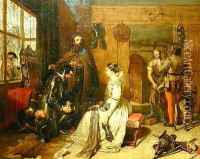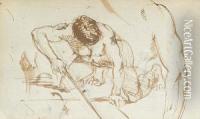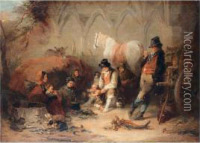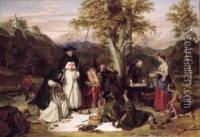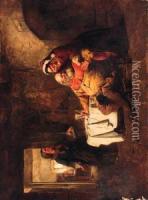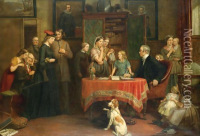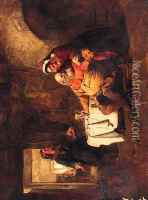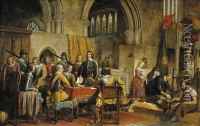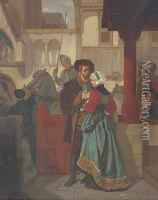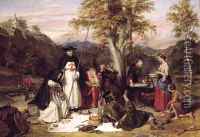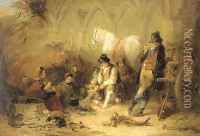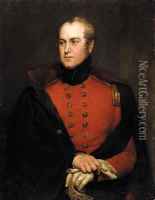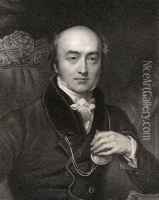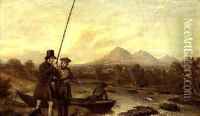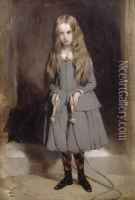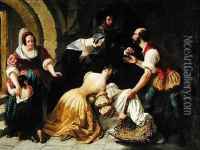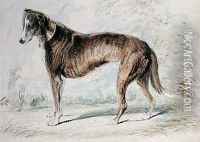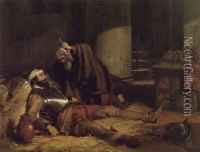Charles Landseer Paintings
Charles Landseer was a notable British painter, born in 1799 into an artistic family. His father, John Landseer, was an engraver of distinction, and his brother, Sir Edwin Landseer, became one of the era's most famous animal painters. Charles Landseer trained at the Royal Academy Schools in London, where he displayed a strong inclination towards historical and genre painting.
During the early stages of his career, Charles Landseer developed his skills by copying old masters in the British Museum and was significantly influenced by the works of great artists such as Peter Paul Rubens and Anthony van Dyck. He also spent time in Portugal and Brazil as part of an embassy retinue, which provided him with exotic subject matter that he incorporated into his work upon his return to England.
Landseer exhibited at the Royal Academy for the first time in 1823 and continued to show his work there for many years. His paintings often depicted scenes from British history or literature, and he was particularly admired for his careful attention to historical accuracy in costume and setting. In 1837, he was appointed Historical Painter to Queen Victoria, reflecting the high regard in which he was held.
In addition to his painting career, Charles Landseer was also active within the Royal Academy. He was elected an Associate of the Royal Academy (A.R.A.) in 1837 and became a full Royal Academician (R.A.) in 1845. Later, he served as the Academy's Keeper from 1851 to 1873, a role in which he was responsible for overseeing the training of young artists.
Charles Landseer's works are characterized by their narrative richness, detailed character portrayal, and vivid settings. Despite living in the shadow of his more famous brother Edwin, Charles achieved considerable success in his own right and contributed significantly to the British art scene of the 19th century. He passed away in 1879, leaving behind a legacy of historical and genre paintings that continue to be appreciated by art historians and collectors alike.
